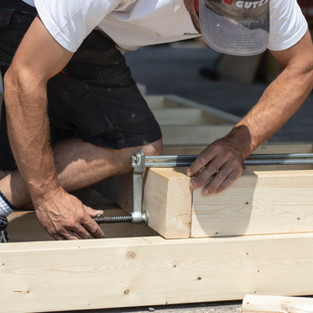Build Well to Live Well: Wellness Lifestyle Real Estate and Communities
- Pun Hlaing Estate

- Jul 15, 2020
- 3 min read
Yoma Land's Pun Hlaing golf estate & community in Yangon was the first gated community built for people seeking a luxury lifestyle. Today, it has become an essential real estate that "addresses the physical, social, and mental/emotional/spiritual dimensions ... that extends to the environmental, community, and economic/financial health and wellbeing of the community." - Global Wellness Institute
Here's an excerpt from Global Wellness Institute.

It is time to treat our homes as an investment in our wellness.
Our homes, communities, and surrounding environment directly affect our daily behaviours and lifestyles, and together these determine up to 80-90% of our health outcomes. Since our homes are typically our most important personal investment and expenditure, it is only logical that they should also be an investment in our health and wellbeing.
The last hundred years have brought great advances in engineering, sanitation, building safety, and city planning. Science and technologies have enabled us to control infectious diseases and bring ever greater levels of comfort, conveniences, entertainment, and telecommunications into our homes. Yet our modern living environment has also created new health risks – sedentary lifestyles, lack of physical activity, poor diet, stress, social isolation, and environmental degradation.
The global rise of many respiratory and chronic diseases has been traced directly to pollution. Our built environment favours driving over biking, sitting over walking, riding in elevators over using the stairs, texting over face-to-face conversations, and screen time over outdoor recreation. Even as people live longer, more are living lonely, unhealthy, and unhappy lives.

The foundation for wellness lifestyle real estate and wellness communities
Wellness lifestyle real estate is a nascent industry that recognises, and has the potential to meet, today’s immense health challenges. It represents a shift that explicitly puts people’s wellness at the centre of the conception, design, creation, and redevelopment of our homes and neighbourhoods.
Importantly, this movement does not have to start from scratch; it can borrow and learn from many historical/current movements and integrate their best features through a multidimensional wellness lens. Many elements of the green/sustainable building movement, design-driven movements, the food movement, New Urbanism, intentional communities, and others, are already being adapted, mixed, and incorporated in innovative ways into new and upcoming wellness-focused residential projects and communities. As we look to the future of wellness real estate and communities, we can expect smarter use of technologies and innovations, new metrics to capture the Return on Wellness (ROW), and a deeper exploration of the relationships between physical and virtual communities and between our individual/personal wellness and community/planetary wellness.
The Future of Wellness Lifestyle Real Estate and Communities
We need to reframe our concept of the professions and industries that are part of our wellness and public health landscape. Many players – real estate investors, urban planners and designers, architects, transportation planners, and the construction industry - shape the built environment that determines our health outcomes. Collectively, we must shift our thinking: buildings and infrastructure are as important as immunisations; pocket parks, paths, and plants are as beneficial as prescriptions; friends and neighbours are more important than Fitbits. The industries involved in shaping our built environment and our health behaviours should all be key partners for building a well world.
Demand for wellness lifestyle real estate and communities is rapidly accelerating. Consumers are seeking out healthy places to live and are ready to pay for them. Industry leaders and visionaries are pioneering innovative ways to meet different consumer lifestyle needs and desires. Governments are beginning to support these efforts, although sometimes in a piecemeal and incoherent fashion. Standards, guidelines, and design principles are emerging to facilitate them. The confluence of these developments means that wellness lifestyle real estate is poised to go from niche to mainstream. Eventually, building for wellness will become the norm.
It is important to define what wellness lifestyle real estate and communities are, in order to prevent “well-washing” and consumer confusion. Simply rebranding real estate developments as “wellness communities” by highlighting a few features or amenities does not make them so. This study provides a guide for the planning and creation of wellness lifestyle real estate and communities as an intentional and holistic concept (not as a checklist or certification process), aimed at bringing positive health benefits and a total wellbeing experience and lifestyle to their residents.










Comments